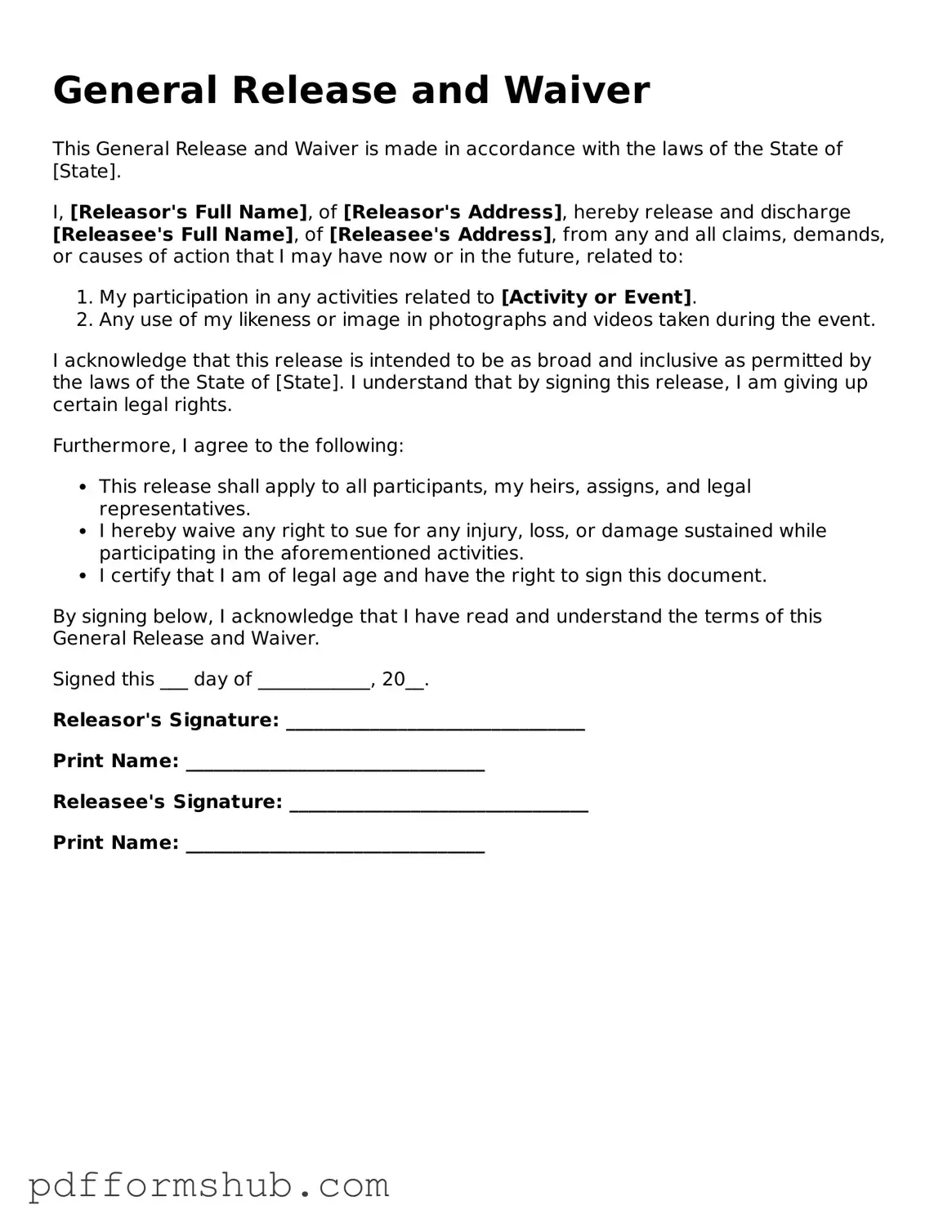The General Release and Waiver form serves as a crucial document in various personal and business transactions, providing individuals with a means to formally relinquish their rights to pursue legal claims against another party. This form is often utilized in situations involving agreements, settlements, or participation in activities where potential risks are present. By signing this document, individuals acknowledge their understanding of the inherent risks and voluntarily agree to release the other party from liability for any injuries or damages that may arise. It is important to recognize that this form not only protects the party being released but also clarifies the responsibilities and expectations of all involved. The language used in the General Release and Waiver is designed to ensure that the signer comprehends the implications of their agreement, fostering transparency and trust. Additionally, the form may include specific details about the context in which it is being executed, ensuring that all parties are on the same page regarding the scope of the release. Understanding the nuances of this form can empower individuals to make informed decisions while safeguarding their rights and interests.
